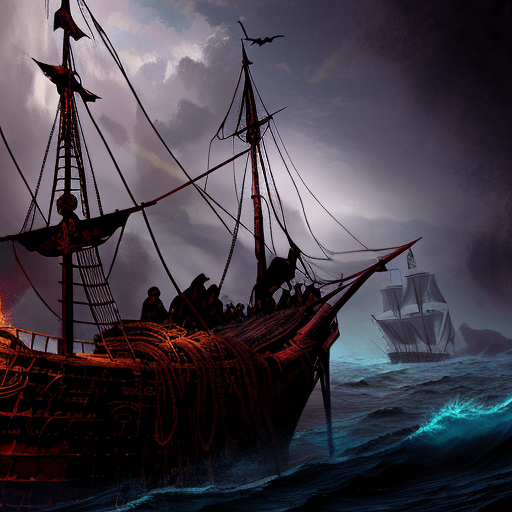Summary:
In “The Rime of the Ancient Mariner” by Samuel Taylor Coleridge, a sailor recounts his harrowing journey at sea, where he is cursed after killing an albatross. The mariner faces supernatural encounters, battles with guilt, and learns the power of redemption. Through vivid imagery and poetic language, Coleridge explores themes of nature, spirituality, and the consequences of human actions.
The poem begins with a one-line summary: A mariner’s voyage turns into a haunting tale of guilt and redemption after he kills an albatross.
The Voyage and the Curse
The mariner and his crew embark on a voyage, sailing through treacherous waters near the South Pole. Their ship is soon surrounded by ice, leaving them stranded. In the midst of their despair, an albatross appears, leading the ship out of the ice and bringing good fortune. However, the mariner, driven by a momentary fit of irrationality, shoots the albatross with his crossbow. This act brings a curse upon the ship and its crew, as they are now plagued by misfortune and death.
Supernatural Encounters and Guilt
As the ship sails through the unforgiving sea, the mariner witnesses supernatural phenomena. The crew members die one by one, their bodies rotting but unable to decay completely. The mariner is tormented by guilt and the weight of his actions. He is forced to wear the dead albatross around his neck as a constant reminder of his sin. The mariner’s isolation and despair intensify as he becomes the sole survivor, surrounded by the lifeless bodies of his crewmates.
Redemption and Spiritual Awakening
In his darkest hour, the mariner experiences a profound spiritual awakening. He begins to appreciate the beauty of nature and the interconnectedness of all living things. As he gazes into the ocean, he sees a multitude of sea creatures and realizes their inherent value. This newfound understanding fills him with a deep sense of remorse and a desire for redemption.
The mariner’s redemption comes in the form of a mystical encounter with a group of angelic spirits. These spirits, representing the forces of nature, guide the ship back to land. The mariner is then compelled to share his tale with others as a cautionary tale of the consequences of thoughtless actions.
Key Takeaways:
- Actions have consequences: The mariner’s impulsive act of killing the albatross brings a curse upon himself and his crew, leading to their suffering and death.
- Redemption and forgiveness: Through remorse and a newfound appreciation for nature, the mariner is able to find redemption and forgiveness for his past actions.
- The power of storytelling: The mariner’s tale serves as a warning to others, emphasizing the importance of learning from the mistakes of the past.
“He prayeth best, who loveth best
All things both great and small;
For the dear God who loveth us,
He made and loveth all.” – Samuel Taylor Coleridge
In “The Rime of the Ancient Mariner,” Coleridge weaves a haunting tale of guilt, redemption, and the power of nature. The mariner’s journey serves as a cautionary reminder that our actions have consequences and that true redemption can only be achieved through remorse and a deep appreciation for the interconnectedness of all living things.












